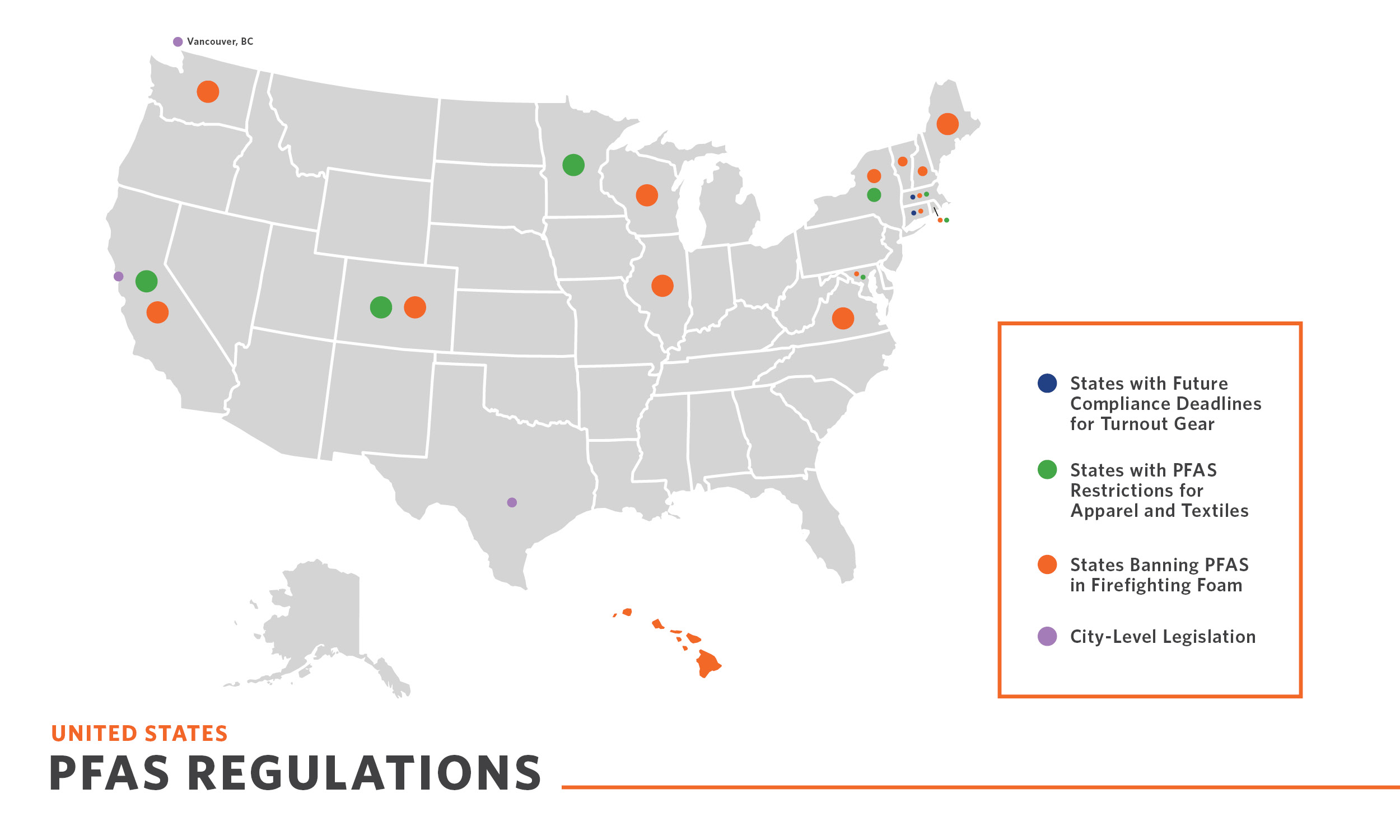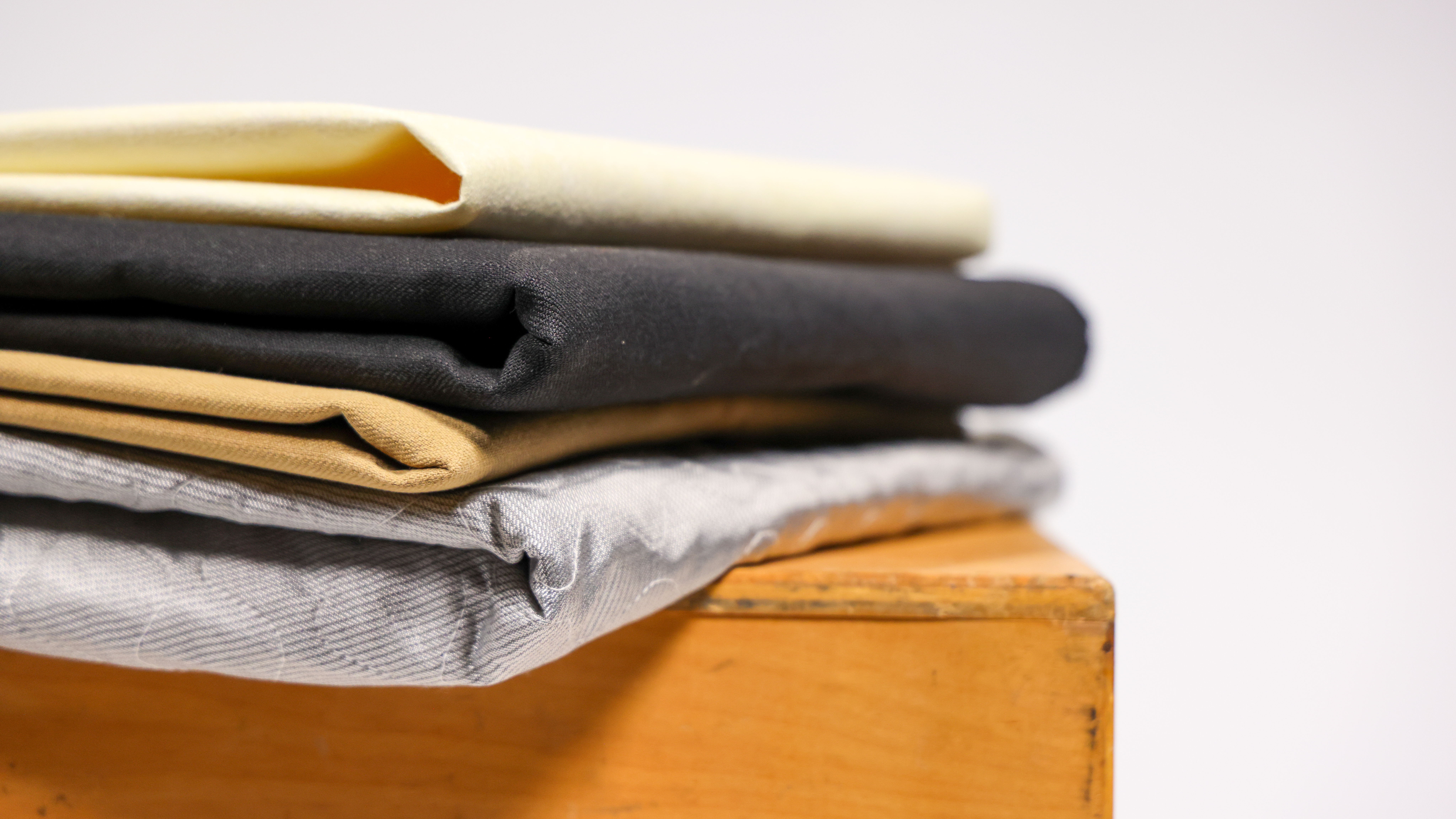Protecting our Protectors
Fire Fighter ServiceHow PFAS Firefighter Gear Regulations Impact Turnout Gear
-
Acerca de nosotros
-
Menú principal
- Acerca de nosotros
- Resumen
- Historia
-
Noticias
-
Acerca de nosotros
- Noticias
- Noticias
- Blog
- Liderazgo
- Cimientos
- Ubicaciones
- Contacta con Nosotros
-
Negocios
-
Menú principal
- Negocios
- Descripción general de nuestros negocios
- Textiles
-
Negocios Químicos
-
Negocios
- Negocios Químicos
- Resumen
- Markets
- Solutions
- Media
- Expertise
- Responsibility
- Contact Us
-
Recubrimiento de suelos
-
Negocios
- Recubrimiento de suelos
- Resumen
- Catálogo de productos
- Encontrar inspiración
- Segmentos
- Datos técnicos
- M/PACT – Impacto en nuestro planeta
- Contacto
-
Soluciones de rendimiento de Milliken
-
Negocios
- Soluciones de rendimiento de Milliken
- Resumen
- Consulting Services
- Education and Events
- Resources
- Virtual Tour
- Contact Us
- Productos
-
Industrias
-
Menú principal
- Industrias
- Resumen de nuestras industrias
- Agricultura
- Vestido
- Automotriz y transporte
- Construcción de edificios e infraestructura
- Recubrimientos, pinturas y tintas
- Comercial
- Bienes de consumo
- Educación
- Energía y servicios Públicos
- Gobierno y defensa
- Atención médica y ciencias biológicas
- Hospitalidad
- Fabricación
- Embalaje e impresión
- Residencial
-
Sostenibilidad
-
Menú principal
- Sostenibilidad
- Resumen
- Informes
- Ética
- Noticias
- Trabajo
.jpg?cx=0&cy=0&t=W1440xH720&hash=3F29F87D2BCB25858AB3084697A7DC0D)
How PFAS Firefighter Gear Regulations Impact Turnout Gear
In recent years, PFAS (per- and polyfluoroalkyl substances) has made its way onto spec sheets and its impact on the health and wellbeing of the fire service industry is being studied closely. As the debate over PFAS in firefighting gear heats up, the urgency to find alternatives grows, putting the spotlight on the safety of our heroes on the front lines.

What Are PFAS and Why Should Firefighters Care?
According to the United States Environmental Protection Agency (EPA), PFAS are a group of man-made chemicals that have been used in various industries since the 1940s. Structural firefighting protective clothing includes multiple layers of textiles, commonly referred to as turnout gear, which can contain PFAS. A 2023 study by the National Institutes of Health highlighted that firefighting foams and turnout gear could be a source of PFAS exposure for firefighters. While research is ongoing, there is growing concern within the fire service community about the potential risks of firefighting and PFAS exposure.
How Is the Fire Service Industry Responding to PFAS Concerns?
This increasing awareness about the health risks associated with PFAS has led to significant regulatory changes, particularly concerning firefighters’ protective gear. Station crews and industry unions like the IAFF are collaborating to find and implement alternatives, ensuring the health and safety of firefighters. At the state and local levels, new laws are being introduced that directly impact the use of PFAS in firefighting gear. Additionally, regulations on PFAS in firefighting foam have been implemented in several states, further driving the industry to innovate and find safer solutions.
Which States Are Regulating PFAS in Firefighting Gear?
States across the country are taking significant steps to regulate PFAS in firefighting gear and foam. These regulations will significantly impact turnout gear manufacturers, who must transition to non-PFAS products and notify purchasers of any PFAS content in their equipment. Here’s a look at some of the key regulations:

Regulations on PFAS in Turnout Gear, Textiles, and Apparel:
- Connecticut and Massachusetts: These states have enacted PFAS bans covering textiles and apparel. Connecticut’s law will require compliant non-PFAS turnout gear by January 2028, while Massachusetts will block the sale of gear with “intentionally added PFAS” by 2027.
- Other States: Seven states have PFAS restrictions for apparel, and nine states have restrictions on textile articles.
- City-Level Regulations: San Francisco, CA signed its PFAS ban for turnout gear in May 2024, marking the first city-level legislation of its kind, while Austin City Council approved a resolution in September 2024 to create a plan to phase out gear and foam containing PFAS over the next three years. Additionally, Vancouver City Council approved a one-time VFRS 2024 budget increase of $2.8 million to procure non-PFAS bunker
gear to ensure all personnel are covered for the remainder of 2024.
Regulations on PFAS in Firefighting Foams:
- Washington: Passed a law banning PFAS in firefighting foams in 2018 and is considering adding turnout gear to the ban.
- Other States: Fourteen states have followed Washington’s lead in banning PFAS-added foam.
These regulations are driving the fire service industry to innovate and find alternatives to PFAS, ensuring that firefighters have the best possible protection without the associated potential health risks.
What Are the Challenges of Moving Towards Non-PFAS Firefighting Gear?
Transitioning away from PFAS in personal protective equipment is a big challenge. PFAS chemistries are great at resisting heat, water, and oil, which makes them ideal for protective gear. Finding alternatives that keep these protective qualities without sacrificing performance is difficult. Here are the main challenges:
- Finding Durable and Protective Materials: Materials used in firefighter gear need to be tough and long-lasting, handling extreme heat and exposure to hazardous conditions. Creating non-PFAS materials that are just as durable and protective takes a significant amount of research and innovation.
- Rigorous Safety Testing: Any new material must go through strict testing to ensure it provides the same level of safety and performance as traditional PFAS-based fabrics. This rigorous testing is crucial to guarantee that the new gear can be trusted in critical moments.
- Maintaining Comfort and Flexibility: Firefighter gear must not only be protective but also comfortable, flexible, and breathable to reduce heat stress. Developing non-PFAS materials that provide the same level of breathability and ease of movement is crucial for firefighter performance and safety.
Where to Find Non-PFAS Turnout Gear Options
Milliken’s Textile Business has successfully navigated these challenges, becoming the first and only U.S.-based manufacturer to offer a non-PFAS fabric for every layer of turnout gear. This achievement demonstrates that protective gear can be high-performing, durable, and comfortable, while also being non-PFAS. Milliken’s innovation not only meets safety and performance standards but also addresses the increasing demand for gear that prioritizes the health and well-being of first responders.

The Next Generation of Firefighter Gear: Safer and Non-PFAS
As the fire service industry continues to advocate for safer gear, the pathway toward non-PFAS turnout gear is becoming clearer. Companies are responding to market demand and regulatory changes by innovating alternatives. Milliken is at the forefront of this movement, providing non-PFAS solutions for firefighter gear that are NFPA 1971-2018 certified.
By staying informed and proactive, we can ensure that our firefighters have the safest and most effective gear available. To learn more about our latest innovations and how we are leading the charge in protective gear, explore our solutions. And, for a deeper look at fire service legislation impacting your community, reach out. Our team would love to chat!

